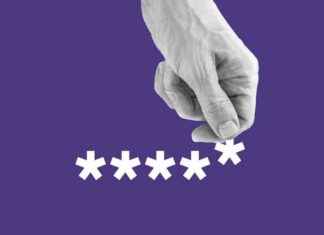The Labor Department reported that Thursday’s jobless claims dropped by 29,000 to 348,000. The four-week average claims, which smooths out volatility week-to-week, also fell by 19,000 to just under 378,000, a pandemic low.
Since January 1,900,000., the weekly rate of unemployment aid applications has been falling steadily. The declining number of jobless first-timers has been correlated with the widespread administration of vaccines. This has led businesses to reopen their doors or expand their hours, and has drawn back consumers to shops, restaurants and airports.
The number of applications is still high, even by historical standards. Before the pandemic that decimated the economy in March 2020 the weekly rate was around 220,000 per week. There is increasing concern that the highly contagious Delta variant could cause a disruption in the economy’s recovery after last year’s severe recession. As some economic indicators, such as air travel, are beginning to decline, economists have begun to reduce their growth estimates for this quarter.
The traditional view of unemployment benefits as a measure of the health of the job market was that they were filed for. Their reliability has been eroded by the pandemic. Many states have seen weekly figures that are exaggerated by fraud and multiple filings by unemployed Americans trying to get benefits. These complications explain why applications are still relatively slow.
According to all reports, the job market is rebounding after the pandemic that paralyzed the economy last year. Employers have cut more than 22,000,000 jobs. Since then, the United States has recovered 16.7 millions jobs. Employers have been adding more jobs over the past three months, with a strong 943,000 in July. Employers have posted record numbers of job openings in the interim, with many complaining that they don’t have enough applicants to fill them.
The drop in aid applications last week was greater than economists expected. This is a sign that, despite concerns about the spread of the delta variant, the recovery of the job market remains on track.
“As life becomes more normal and the service sector gains momentum (delta variant permitting),” Joshua Shapiro of Maria Fiorini Ramirez, the chief U.S. economist, stated in a research note.
Shapiro stated that the report “points to a continued rapid pace job gains since July employment data were collected.”
Employers may attribute their labor shortages, which include $300 per week in supplemental unemployment benefits from federal government to discourage some jobless from looking for work. Many states have pulled out of federal programs that expire next month, as a result.
Economists also point out other factors that have kept some people off the job market. These include the inability to find or afford child care, the fear of becoming infected at work, and the desire for some people to look for better jobs than before the pandemic.
No matter what the reason, the economy is still 5.7 million jobs short of the February 2020 number. The U.S. is now reporting an average of more 100,000 COVID-19 new cases per day, up from less than 12,000 in June. This delta variant is affecting the outlook for the remainder of the year.
In the week ending Aug. 7, just over 2.8million people received traditional state jobless benefits, a drop of 79,000 since the pandemic.
Including federal benefits, 11.7million were receiving some form of unemployment benefit in the week ending July 31, a drop of 28.7million a year ago. This is partly due to the fact that more people are working and not receiving any jobless assistance. It also reflects the ending of federal unemployment assistance programs for self-employed workers and separate programs for long-term jobless.







